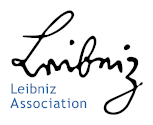- The Institute
- Research
- Dictatorships in the 20th Century
- Democracies and their Historical Self-Perceptions
- Transformations in Most Recent History
- International and Transnational Relations
- Edited Source Collections
- Dissertation Projects
- Completed Projects
- Dokumentation Obersalzberg
- Center for Holocaust Studies
- Berlin Center for Cold War Studies
- Publications
- Vierteljahrshefte
- The Archives
- Library
- Center for Holocaust Studies
- News
- Dates
- Press
- Recent Publications
- News from the Institute
- Topics
- Munich 1972
- Confronting Decline
- Feminist, Pacifist, Provocateur
- Der Mauerbau als Audiowalk
- Digital Contemporary History
- Transportation in Germany
- Envisaged Futures at the End of the Cold War
- From the Reichsbank to the Bundesbank
- German Federal Chancellery
- History of Sustainabilities: Discourses and Practices since the 1970s
- Changing Work
- Democratic Culture and the Nazi Past
- The History of the Treuhandanstalt
- Foreign Policy Documentation (AAPD)
- Dokumentation Obersalzberg
- Hitler, Mein Kampf. A Critical Edition
- "Man hört, man spricht"
- Dictatorships in the 20th Century
- Democracies and their Historical Self-Perceptions
- Transformations in Most Recent History
- International and Transnational Relations
- Edited Source Collections
- Dissertation Projects
- Completed Projects
- Dokumentation Obersalzberg
- Center for Holocaust Studies
- Berlin Center for Cold War Studies
Stern and its History(s): Historical Roots, Themes, Actors and Transformations in the First Decades of the Federal Republic of Germany
Employees (IfZ):
Dr. Felix Lieb,
Prof. Dr. Magnus Brechtken
Projektinhalt:
Founded in 1948, Stern magazine is a myth of German media history. Building on the - long ignored - foundations of its predecessor in the "Third Reich," under Henri Nannen's leadership Stern developed into West Germany's highest-circulation illustrated magazine. Stern accompanied the democratization of West German society after the end of National Socialism and played an important role in the political and social liberalization of the Federal Republic, especially since the 1960s. The publication of the alleged but falsified "Hitler diaries" in 1983, however, inflicted considerable damage on the magazine's self-image as a well-researched mass medium that was simultaneously written for broad reader tastes and combined entertainment and information. Moreover, the actions and backgrounds of leading figures during the Nazi era have recently been repeatedly problematized.
The related, larger question of how Stern dealt with the Nazi past and possible continuities in terms of personnel, content and design into the "Third Reich" has already been examined in specific areas. However, a systematic analysis is still pending. On the one hand, the story of Stern's and Henri Nannen's own rise to prominence after a media "zero hour" determined the external perception of the paper for a long time and led to a distorted reception of existing research findings. On the other hand, in the last two decades, Nazi continuities in West German institutions, companies, discourses and personal networks have been researched more intensively, but the field of media and journalism has largely been left out. A specific media-historical "reappraisal project" on Stern therefore does not yet exist, nor does one on most of the other well-known press organs.
The project therefore concentrates, in a multidimensional approach, on how Stern deals with its Nazi past. In addition to textual analysis, the visual language and visualization of NS-related content will play a central role and fill a research gap. On the personnel level, the study focuses on the relevant editors and photographers. It examines how the treatment of the Nazi era in Stern was related to personal experiences and possible burdens in the "Third Reich" and to what extent the media's processing of the Nazi era was based on continuities or discontinuities of certain world views and role understandings. Stern serves as an exemplary mirror for the changing historical and negotiating interests of German society and for their medial processing and influence. The core of the study - taking into account older journalistic models and the biographical background of the actors - is Stern from its founding in 1948 to the fake "Hitler





